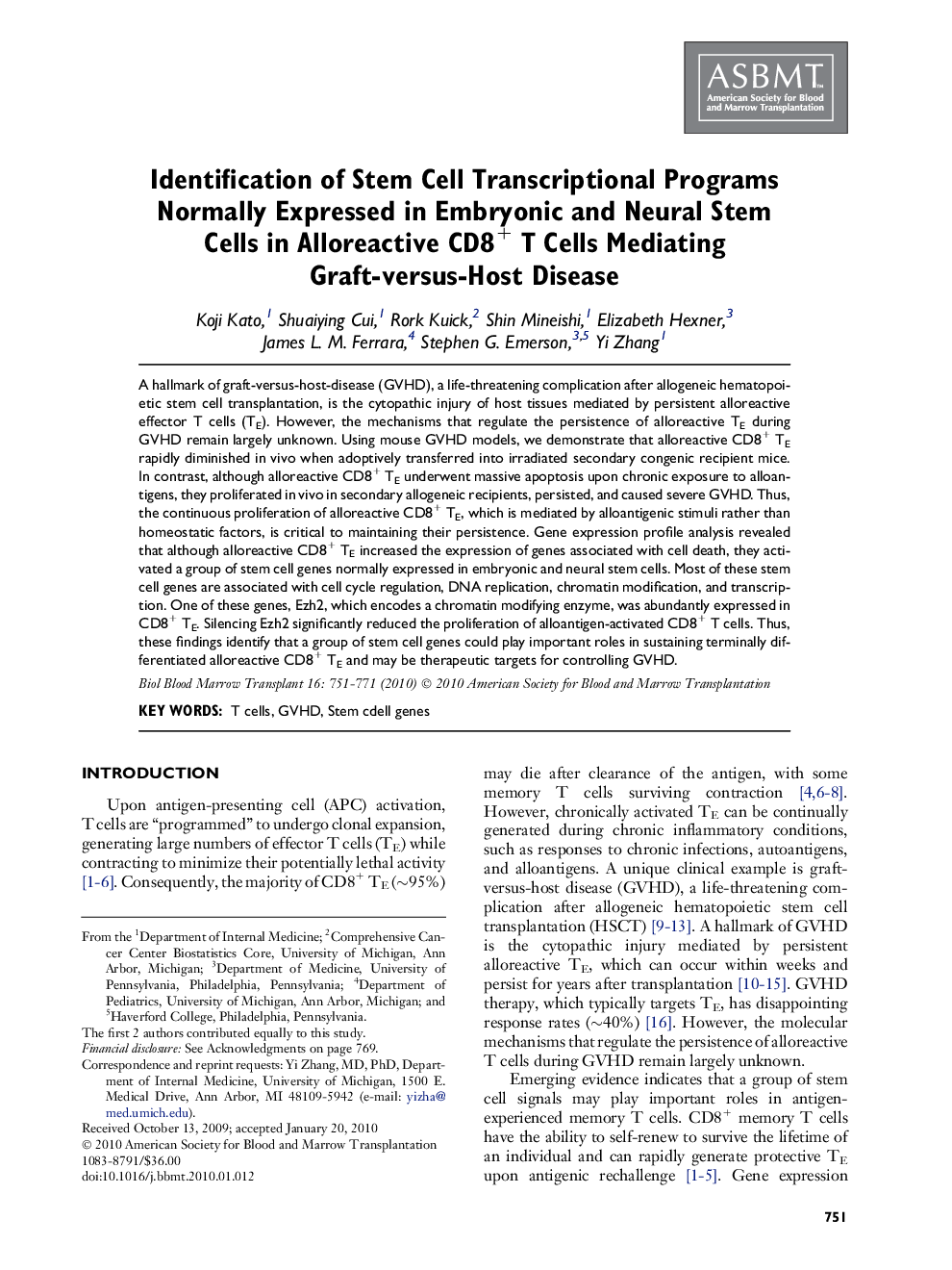| Article ID | Journal | Published Year | Pages | File Type |
|---|---|---|---|---|
| 2103875 | Biology of Blood and Marrow Transplantation | 2010 | 21 Pages |
A hallmark of graft-versus-host-disease (GVHD), a life-threatening complication after allogeneic hematopoietic stem cell transplantation, is the cytopathic injury of host tissues mediated by persistent alloreactive effector T cells (TE). However, the mechanisms that regulate the persistence of alloreactive TE during GVHD remain largely unknown. Using mouse GVHD models, we demonstrate that alloreactive CD8+ TE rapidly diminished in vivo when adoptively transferred into irradiated secondary congenic recipient mice. In contrast, although alloreactive CD8+ TE underwent massive apoptosis upon chronic exposure to alloantigens, they proliferated in vivo in secondary allogeneic recipients, persisted, and caused severe GVHD. Thus, the continuous proliferation of alloreactive CD8+ TE, which is mediated by alloantigenic stimuli rather than homeostatic factors, is critical to maintaining their persistence. Gene expression profile analysis revealed that although alloreactive CD8+ TE increased the expression of genes associated with cell death, they activated a group of stem cell genes normally expressed in embryonic and neural stem cells. Most of these stem cell genes are associated with cell cycle regulation, DNA replication, chromatin modification, and transcription. One of these genes, Ezh2, which encodes a chromatin modifying enzyme, was abundantly expressed in CD8+ TE. Silencing Ezh2 significantly reduced the proliferation of alloantigen-activated CD8+ T cells. Thus, these findings identify that a group of stem cell genes could play important roles in sustaining terminally differentiated alloreactive CD8+ TE and may be therapeutic targets for controlling GVHD.
